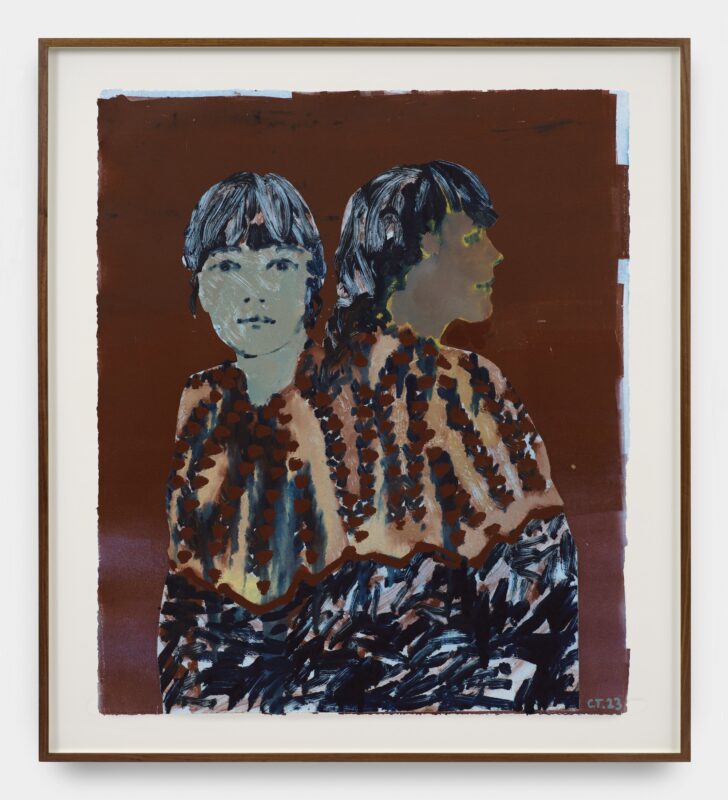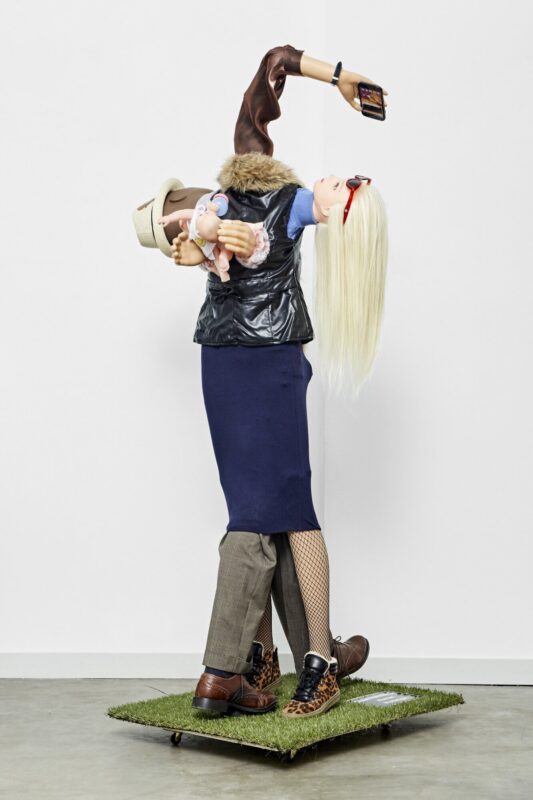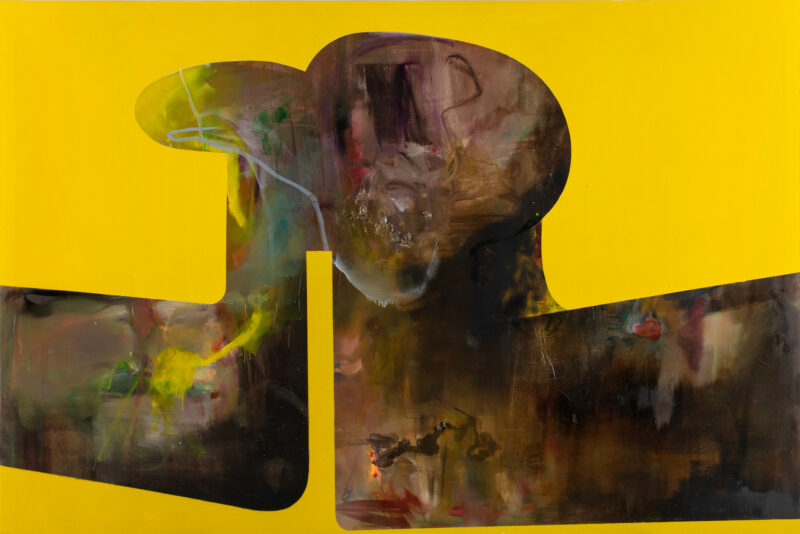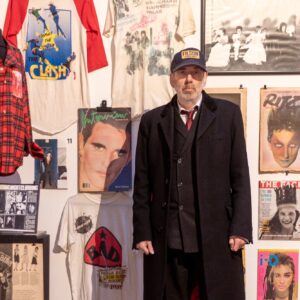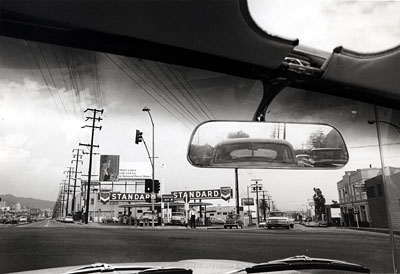
Image:Dennis Hopper Double Standard 1961 gelatin silver print
© Dennis Hopper, image courtesy of the artist and Tony Shafrazi Gallery, New York
Best known for his work in film, Hopper produced an oeuvre of remarkable breadth that blurs the boundaries between art, film, and popular culture. The exhibition will trace the evolution of Hopper’s artistic output and feature more than 200 works spanning his prolific 60-year career in a range of media, including an early painting from 1955; photographs, sculpture, and assemblages from the 1960s; paintings from the 1980s and ’90s; graffiti-inspired wall constructions and large-scale billboard paintings from the 2000s; his most recent sculptures; and film installations.
The title of the exhibition is taken from Hopper’s iconic 1961 photograph of the two Standard Oil signs seen through an automobile windshield at the intersection of Santa Monica Boulevard, Melrose Avenue, and North Doheny Drive on historic Route 66 in Los Angeles. The image was reproduced on the invitation for Ed Ruscha’s second solo exhibition at Ferus Gallery in 1964. Dennis Hopper Double Standard is curated by Julian Schnabel, whose work has been inspired by Hopper’s fusion of art and film.
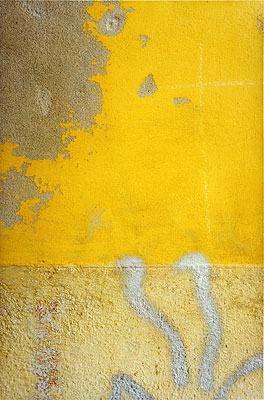
Image:Dennis Hopper Florence (Yellow with silver spray paint)
1997 ilfochrome on metal 20 x 16 in.© The Estate of Dennis Hopper, courtesy of The Estate of Dennis Hopper and Tony Shafrazi Gallery, New York
“Dennis Hopper’s work has been a springboard for the work of many artists and filmmakers of a younger generation,” comments MOCA Director Jeffrey Deitch. “His fusion of artistic media has become an inspiration for the new artistic generation who often draw on performance and film as well as painting, sculpture, and photography in the creation of their work.”
Julian Schnabel calls Hopper, “a painter without a brush,” articulating a visual statement that is “beyond language.” Schnabel speaks about how Hopper “made film into art,” and describes how he “takes the viewer on a high risk journey with him, working without a safety net.”
Hopper prefigured the union of art, life, and popular culture that characterizes much of the art of the 21st century. He was a creative connector, introducing and collaborating with artists, actors, writers, and musicians for nearly six decades. His works made in the 1960s capture the quintessential pop imagery that symbolizes Los Angeles during that time. “L.A was Pop,” Hopper recalled, talking about that period, “L.A. was the billboards. L.A. was the automobile culture. L.A. was the movie stars and L.A. was the whole idea of what ‘Pop’ was about.” Ahead of his time in bringing the art of the street into the gallery, Hopper’s work also constructs a dialogue between abstract expressionist painting and graffiti and gang signs from Los Angeles street culture.
Dennis Hopper Double Standard assembles key selections and bodies of work examining the artist’s creative development with a focus on artworks made between 1961 and present day, as many of Hopper’s earlier paintings were destroyed in his studio by the 1961 Bel Air fire. The exhibition will be organized in several sections reflecting the cyclical and serial nature of the artist’s work. The layout will bring together various groupings of work emphasizing Hopper’s interest in Duchampian appropriation of common objects and the dialogue between pop and progressive culture. It will also highlight the ways in which Hopper has utilized a range of styles—from abstraction, the ready-made, and pop art to conceptual and performance art—to further his investigation into the “return to the real.”
The first portion of the exhibition will include a comprehensive selection of sculpture and assemblages as well as photographs documenting the progressive, changing culture of the time and the pop-art scene in both Los Angeles and New York from the 1960s. The second section will feature a series of paintings from the 1980s and ’90s inspired by graffiti-covered walls and the urban Los Angeles landscape. This segment also incorporates Hopper’s set-like wall constructions. Hopper’s monumental billboard paintings from the 2000s, which borrow images from his earlier life and work, and more recent series of abstract landscape photographs will also be included in the exhibition. In the final section, a series of film installations highlighting Hopper’s career as a director and actor will be presented.
Fred Hoffman, who has a long association with Dennis Hopper, is the curatorial consultant for Dennis Hopper Double Standard. The museum thanks Tony Shafrazi and Tony Shafrazi Gallery for their dedicated collaboration in realizing the exhibition.
For nearly six decades, Dennis Hopper (b. 1936, Dodge City, Kansas; d. 2010, Los Angeles) was at the center of the Los Angeles creative community. He had a prolific career working in film, photography, as a painter, and as a sculptor. He directed numerous films including Easy Rider (1969), The Last Movie (1971), and Colors (1988), and acted in many more including Rebel Without a Cause (1955), Giant (1956), Cool Hand Luke (1967), Apocalypse Now (1979), Blue Velvet (1986), Speed (1994), and Basquiat (1996).
Hopper has been celebrated in monographic and group exhibitions around the world including the Corcoran Gallery of Art, Washington D.C.; The Walker Art Center, Minneapolis, Minnesota; the Stedelijk Museum, Amsterdam; the State Hermitage Museum, St. Petersburg; MAK Vienna: Austrian Museum of Applied Arts/Contemporary Art, Vienna; the Whitney Museum of American Art, New York; and most recently the Cinémathèque Française, Paris, and the Australian Centre for the Moving Image, Melbourne.
www.moca.org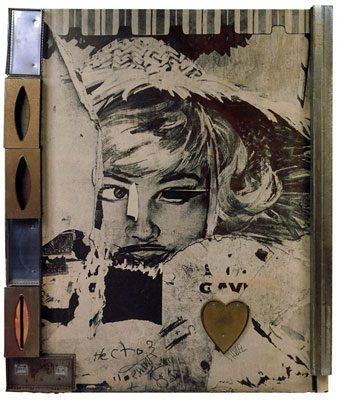
Image:Dennis Hopper After the Fall 1961-64 photograph with objects 60 x 50 x 2 in.© The Estate of Dennis Hopper, courtesy of The Estate of Dennis Hopper

